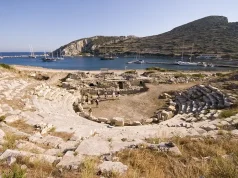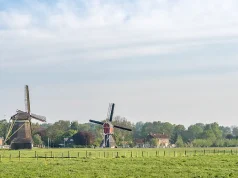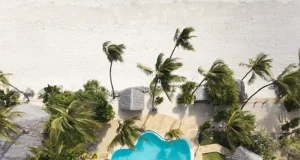
Cape Town is already beautiful at street level, but the moment a helicopter lifts above the harbour, the whole shape of the city opens up. Table Mountain rises behind the skyline, the Atlantic Seaboard curves away like a long silver edge, and the Cape Peninsula stretches into clear ocean.
Planning Cape Town helicopter tours is less about guessing the “best” option and more about matching the right route to the sights you want. This guide focuses on scenic flights that show Table Mountain, Camps Bay, and the Peninsula, since these are the routes most visitors want to compare.
Most flights depart from the V&A Waterfront helipad. Pilots follow set scenic routes that trace the coast, move beside Table Mountain, pass Clifton and Camps Bay, and on longer routes reach Cape Point and False Bay. With clear expectations and smart planning, the helicopter tour becomes one of the easiest and most rewarding ways to understand the layout of Cape Town.
Why Travellers Choose Scenic Routes Over Table Mountain, Camps Bay, and the Peninsula
Cape Town sits between the Atlantic Ocean and a ring of sandstone mountains. From above, the geography is simple to read. Table Mountain forms a high flat rim that drops into the city bowl. Lion’s Head stands beside it. Signal Hill forms a gentle shoulder. Clifton and Camps Bay sit on white sand with the Twelve Apostles ridge behind them. Farther south, the Peninsula runs toward Cape Point with tall cliffs and open water on both sides.
A scenic helicopter flight shows all of this in one trip. It gives a clear picture of how close the landmarks are to each other and how sharply the coastline changes shape as it bends around the mountain. People choose these flights because they cover the most iconic viewpoints in a short time, and the views are not blocked by roads, hills, or city buildings.
How Scenic Routes Differ: Short, Medium, and Full Peninsula Flights
Helicopter operators like Hoper in Cape Town offer a small set of well-known scenic routes with published durations and fixed paths. These routes are designed to show the city and coastline without flying over restricted areas like the top plateau of Table Mountain, which is part of Table Mountain National Park. Instead of crossing the summit, the aircraft moves beside its cliffs or loops around it. This keeps the tour within the rules and still gives clear views of the mountain’s shape.
Here is how the routes compare.
Short Scenic Route (About 12 Minutes)
This route lifts from the Waterfront, passes the city bowl, moves beside Table Mountain, then follows the Atlantic Seaboard past Clifton and Camps Bay. It is the fastest way to see the core views people expect when they picture Cape Town. It is ideal for travellers with limited time or a tight schedule.
Medium Scenic Route (About 18 to 25 Minutes)
This route covers everything in the short loop but continues along the Atlantic coast toward Hout Bay. The views stretch across the Twelve Apostles ridge, the long drop into the bay, and the open water that curves around the peninsula. It suits travellers who want to see more coastline and get a broader sense of the mountain range behind the city.
Full Peninsula Scenic Route (About 45 to 56 Minutes)
This is the most complete route. It follows the Atlantic Seaboard, runs along the cliffs toward Cape Point, passes the Cape of Good Hope inside the national park, then returns over False Bay. On the way back, the flight may pass Muizenberg, Fish Hoek, Simon’s Town, or the Constantia side of Table Mountain. This route creates a full picture of the Cape Peninsula from one end to the other. Travellers who want both coasts, Cape Point, and wide open ocean views tend to choose this option.
How to Choose the Right Route for Your Trip
The route you choose should match the scenery you care about most.
Choose the short route if:
You mainly want Table Mountain, Clifton, and Camps Bay views. You are new to helicopter flights, want a quick, simple loop, and are short on time.
Choose the medium route if:
You want longer mountain and coastline views. You want a calmer pace, more time to take photos, and want to see the Twelve Apostles and Hout Bay clearly.
Choose the full peninsula route if:
You want Cape Point, both coasts, wide open water, and a complete picture of the peninsula. You prefer the longest and most complete experience.
Each route follows fixed landmarks. The more time in the air, the wider the range of sights you will cover around Table Mountain, Camps Bay, and the Peninsula.
Comfort, Seating, and What Affects the Experience
Helicopter cabins feel different from aircraft cabins on commercial flights. They are smaller and more open, with large windows. Every operator must keep the aircraft balanced, so passengers give their weight at booking. This helps crews place people in seats that keep the helicopter stable. It is a standard safety practice.
Window seats allow wide camera angles, but even middle seats have strong side and front views because the cabin is mostly glass. Pilots also turn often, so each person gets a clear view of the main sights.
The sounds of the rotors can be loud, so guests wear headsets that reduce noise and allow simple communication. Many travellers find this part of the experience calming once the flight begins.
Safety and Weather Rules That Shape Each Tour
Scenic helicopters in Cape Town operate under the South African Civil Aviation Authority. This includes maintenance rules, pilot licensing, and safety checks. Crews repeat the safety briefing before each flight. Guests learn how to walk near the helicopter, when to wait for the pilot’s signal, and how to fasten headsets and seatbelts.
The weather is also a major factor. Low cloud that covers Table Mountain, strong south easterly winds, or rain over the Peninsula can delay takeoff or change the route. These conditions can appear quickly, especially in summer when the south easter picks up in the afternoon. On clear days, visibility is wide and the ride is smooth. On windy days, the flight may follow a gentler path.
Travellers planning a more extended flight often watch the weather forecast and book the time of day that is most stable.
Best Times for Scenic Flights
Cape Town has warm, dry summers and cooler, wetter winters. Scenic helicopter flights operate throughout the year, but visibility and comfort vary by season and time of day.
Summer (November to March)
Extended daylight hours, clear views of Table Mountain and the Peninsula, and many stable mornings. This is the most popular season for scenic flights.
Winter (June to August)
More cloud, rain, and cold fronts. Flights still run, but weather changes may shorten or delay them. When winter skies open up, the air is crisp, and visibility can be excellent.
Morning Flights
Often the calmest. The light falls softly on Table Mountain, and the colours of the water below Camps Bay show clearly.
Midday Flights
The brightest light. Strong colour on sand and sea. Some glare, so sunglasses help.
Late Afternoon Flights
Warm golden light on the Twelve Apostles and Cape Point. Wind often increases later in the day, so travellers sensitive to motion sometimes choose morning slots instead.
What Happens on the Day of Your Helicopter Tour
Most scenic flights follow a simple, predictable check-in process that keeps everything running smoothly.
- Arrive at the Waterfront helipad about thirty minutes before your flight.
- Check in with the crew, confirm your names and route.
- Provide weight details if you have not already done so.
- Wait in the lounge or seating area until your group is called.
- Listen to the safety briefing.
- Walk with the crew to the helicopter in a single line.
- Buckle in, put on your headset, and settle into your seat.
- The pilot lifts off and begins the route you selected.
- After landing, the crew guides your group back to the lounge.
The process feels organised and calm. Most travellers find the takeoff exciting but steady, and the views begin only moments after the helicopter leaves the ground.
Photo Tips for Table Mountain, Camps Bay, and the Peninsula
Clear photos depend on light, angles, and simple preparation.
• Charge your phone or camera fully.
• Clean your lens before leaving the hotel.
• Avoid loose items.
• Hold your camera close to the window to reduce reflections.
• Look for the key shapes from above. The flat top of Table Mountain. The bright curve of Camps Bay beach. The cliffs above Hout Bay. The long line where the Atlantic meets False Bay near the peninsula.
These are the scenes people travel here to capture, and they look sharp and bright from the air.
Handling Nerves or First-Time Flight Worries
Many travellers step into a helicopter for the first time in Cape Town. Cabin crews know this and help guests settle. Slow breathing works well. Looking at the horizon steadies your sense of balance. Speaking to a friend through the headset keeps your attention outside the cabin. Once the helicopter levels out, the ride feels smooth, and the landscape draws your focus.
Bringing It All Together
Planning a Cape Town helicopter tour is simple when you match the route to the scenery you want to see. If your priority is Table Mountain and Camps Bay, the short or medium loops work well. If your goal is a complete picture of the Cape Peninsula, choose the more extended helicopter tour that reaches Cape Point and returns over False Bay. By understanding the routes, weather patterns, comfort factors, and timing, you can enjoy a smooth takeoff, a memorable flight, and a clear view of how the mountain, beaches, and coastline fit together.
The city’s geography makes more sense from the sky. Once the helicopter climbs past the harbour and the first views of Table Mountain appear, the layout of Cape Town becomes one connected landscape. That is what makes these scenic flights so popular. They show the city in one clear, unforgettable sweep.





